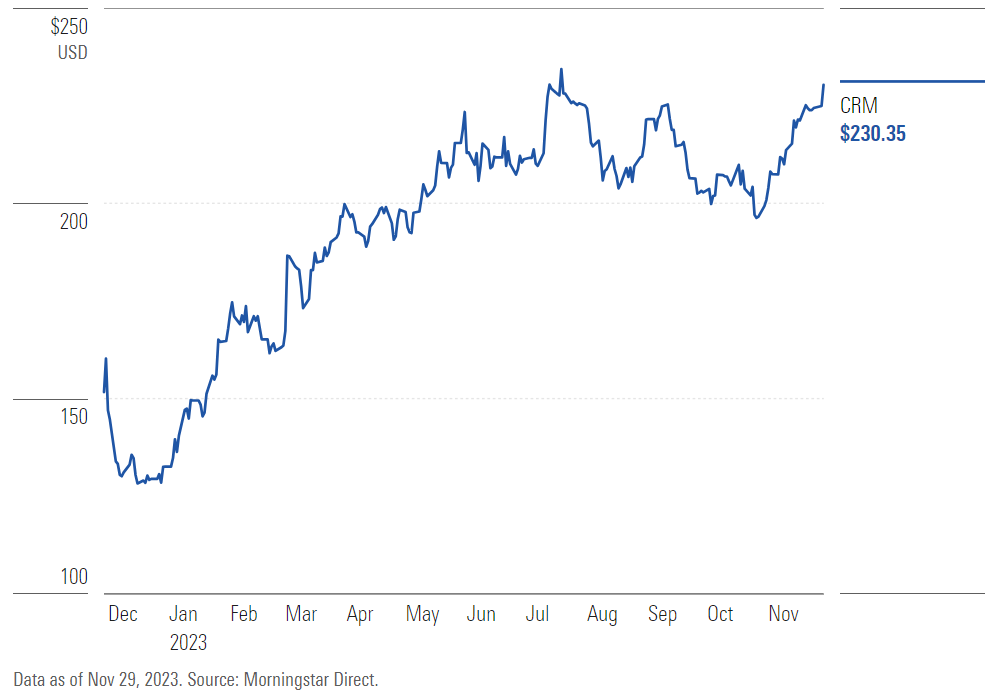20 Great Pieces Of Advice For Picking AI Stock Prediction Websites
20 Great Pieces Of Advice For Picking AI Stock Prediction Websites
Blog Article
Top 10 Tips For Assessing The Market Coverage Of Ai Trading Platforms For Predicting Stocks
The market coverage of trading platforms that use AI analysis of stocks is vital, since it defines the types of assets and markets you can access. If you choose a platform with extensive coverage, you are able to diversify your portfolio and make the most of opportunities across the globe. You can also adjust to various trading strategies. These are the top ten ways to assess the market cover of these platforms.
1. Evaluate Supported Asset Classes
Stocks: Ensure that your platform supports major stock exchanges, including NYSE, NASDAQ LSE and HKEX and includes mid, small and large-cap stocks.
ETFs. Verify that the platform offers a variety of ETFs, so you gain exposure to a variety of.
Futures and options: Determine whether the platform is able to handle derivatives such as options, futures and other leveraged instruments.
Forex and commodities: See if your platform offers forex and commodities, as well as precious metals, and energy commodities.
Cryptocurrencies: Make sure the platform supports major copyright (e.g., Bitcoin, Ethereum) and altcoins.
2. Check coverage of your area
Global markets: Make sure that the platform is able to cover major global markets, including North America, Europe, Asia-Pacific, and emerging markets.
Regional focus Make sure that the platform has a focus on certain markets or regions that coincide with your trading interests.
Local exchanges. Check whether the platform can support exchanges local or regional to your area.
3. Delayed Data Vs. Delayed Data
Real-time data is essential to make quick decisions particularly when trading is in the active phase.
Delayed data - Find out if delayed data is free or available at a cheaper price. This might be enough for investors looking to invest in the long run.
Data latency. Examine whether the platform minimizes the delay for feeds of information that are real-time particularly for high-frequency trading.
4. Review the availability of historical data
In depth of Historical Data Check that the platform offers extensive historical data that can be used for backtesting as well as analysis and testing (e.g. 10+ years).
Examine the any granularity. Historical data may include intraday, daily and weekly granularity.
Corporate actions: Verify whether historical data reflects dividends, stock splits, as well as other corporate actions.
5. Examine the market depth as well as the order book details
For a better price discovery experience make sure that the platform has Level 2 data.
Be sure to check for live bidding and asking spreads. This will guarantee that pricing is accurate.
Volume data - Check if the platform provides detailed volume information for analyzing market activities and liquidity.
6. Assess how much coverage is available for Indices & Sectors
Major indices: Ensure that the platform has major indices for benchmarking, index-based strategies, as well as other purposes (e.g. S&P 500, NASDAQ 100, FTSE 100).
Sector-specific data : Find out if your platform has data specifically for certain industries (e.g. technology, healthcare and energy) so you can perform targeted analyses.
Custom indices: Verify whether the platform supports the creation or tracking of custom indices that meet your requirements.
7. Integrate News and Sentiment Data
News feeds : Make sure you use a platform that incorporates live news feeds, particularly from reliable media outlets (e.g. Bloomberg and Reuters) to cover the most significant market occasions.
Sentiment Analysis: Find out whether the platform provides tools for analyzing sentiment that are built on social media, news or other sources of data.
Strategies based on events: Check whether the platform is compatible with events-driven trading strategies (e.g., earnings announcements or economic reports).
8. Check for Multi Market Trading Capabilities
Cross-markets trading: The system should allow trading in different markets or asset classes with a single user interface.
Currency conversion Check to see whether you are able to automate the conversion of currencies for international trades and also if you have accounts that support multi-currency transactions.
Support for time zones of different times: Make sure the platform supports trading on global markets in various time zones.
9. Evaluation of alternative data sources
Alternate data sources: To gain unique insights, verify if the platform incorporates other data sources.
ESG data: Check if the platform includes environmental, social, and governance (ESG) information to support socially responsible investment.
Macroeconomic Data: Make sure that the platform includes macroeconomic indicators such as inflation, GDP and interest rates.
Review reviews and feedback from customers as well as the reputation of the market
Feedback from users: Read user reviews to determine the credibility of the platform as well as market coverage.
Industry reputation: Check if the platform is recognized for its market coverage by industry experts or by awards.
Case studies: Seek out cases studies or testimonials that highlight the platform's effectiveness in specific areas or asset classes.
Bonus Tips
Trial period: Try the platform for free to test how it covers market trends and what data is available.
API access: Verify if the platform's API permits access to market data programmatically to create custom analysis.
Customer support: Make sure the platform can help with any market-related queries or data issues.
If you follow these guidelines and techniques, you will be able to assess the market coverage offered by AI platform for predicting and analyzing stocks, ensuring you choose a platform that provides access to the markets and data that you require to be successful in trading. You can diversify your portfolio and take advantage of new opportunities with the help of broad market coverage. See the recommended ai for stock trading for site recommendations including incite, AI stock market, ai investing platform, ai investing app, ai for stock predictions, AI stock picker, ai investment platform, incite, AI stock trading bot free, chatgpt copyright and more.
Top 10 Tips For Assessing The Scalability Ai Stock Predicting Trading Platforms
It is important to assess the performance and scalability of AI-driven stock prediction and trading platforms. This will help ensure that they are able to manage the growing volume of data, market complexity, and the demands of users. Here are 10 top methods to evaluate scalability.
1. Evaluate Data Handling Capacity
Tips: Make sure that the platform is able to process and analyse huge databases.
Why is that? Scalable platforms must be able handle growing data volumes with no performance loss.
2. Test Real-Time Processor Capabilities
Find out how your platform handles real-time streams of data such as live stock quotes or breaking news.
The reason: The importance of real-time analysis is for trading decisions, and delay can result in miss opportunities.
3. Cloud Infrastructure and Elasticity
Tip. Check if the platform utilizes cloud-based infrastructure, such as AWS, Google Cloud and Azure that can scale resources on demand.
Why is that the cloud platform's elasticity allows the system's size to change based on use.
4. Algorithm Efficiency
Tip: Determine the efficiency of AI models that are employed to predict (e.g. Deep Learning or Reinforcement learning).
Reason: Complex algorithms require a lot of resources. Thus optimizing them will help you scale.
5. Learn about Parallel Processing and Distributed Computer Systems.
TIP: Find out if the platform supports parallel processing or distributed computing frameworks (e.g., Apache Spark, Hadoop).
Why: These new technologies allow for faster analysis of data and processing across multiple nodes.
6. Examine API Integration and Interoperability
Tips: Test the platform's ability to integrate with external APIs (e.g., market data providers, brokerage APIs).
What's the reason? Seamless integration enables the platform to be adapted to changing trading environments and data sources.
7. Analyze User Load Handling
Utilize a high-traffic simulator to test how the platform reacts under stress.
What's the reason? The performance of a platform that is scalable shouldn't be affected by the rise in users.
8. Assess the Retraining Model and its Adaptability
Tips: Examine how often and effectively AI models are retrained with the help of new data.
The reason is that markets change and models have to change quickly to ensure accuracy.
9. Check for Fault Tolerance and Redundancy
Tip: Make sure your platform has failover mechanisms to handle software or hardware malfunctions.
The reason: Downtime is costly in trading, so fault tolerance is essential to ensure the ability to scale.
10. Monitor Cost Efficiency
Tips: Calculate the cost of expanding your platform. Consider cloud resources, storage for data and computational power.
Why: Scalability should not come at an unsustainable cost, so balancing performance and cost is crucial.
Bonus tip Future-proofing
Platforms must be designed to integrate emerging technologies such as quantum computing and advanced NLP. They must also adapt to regulatory change.
These aspects can assist you in assessing the impact of AI-based stock prediction and trade platforms. They'll also make sure they're robust, efficient capable of expansion and are future-proof. Have a look at the recommended chart analysis ai blog for more recommendations including ai trading tool, AI stock price prediction, chart analysis ai, ai options trading, AI stock prediction, how to use ai for copyright trading, free AI stock picker, AI stock trader, how to use ai for stock trading, AI stock analysis and more.